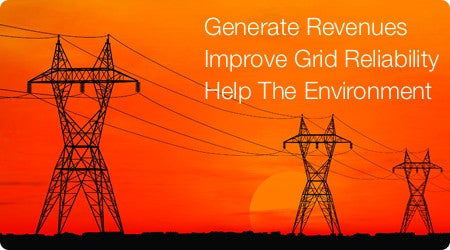Demand Response Is the Best Cure for Texas’ Ailing Grid

The Texas Public Utilities Commission (PUC) has, yet again, kicked the can down the road on securing reliable energy to power the state’s growing population. The PUC, the state agency charged with managing electricity rates, meets to securely plan for the future, yet they continue to delay planning meetings. This will benefit no one in the short or long-run. To secure reliable power and safeguard against threats of blackouts, the PUC needs to keep pace with the times and leverage technologies that require little to no water, generate negligible carbon emissions, and can respond to the call for electricity.
Last week, the PUC decided to postpone indefinitely an important meeting, originally scheduled for May, to discuss Texas’ recent blackout scares. The PUC has been in a heated debate over Texas’ electricity market structure, and in the midst of backlash from stakeholders, they have decided to push the decision onto the Legislature in 2015. This is not necessarily in the best interest of the state. Texans were asked to conserve energy several times this winter after colder temperatures forced heating units to ramp up. This request to turn down thermostats for threat of rolling blackouts came at the same time the state power grid operator assured Texans that reliability is on the upswing. But it’s time Texas faces the facts.
The state’s current electricity market is too reliant on inefficient, fossil-fueled power plants, which failed repeatedly this winter to meet the electricity needs of Texas’ growing economy.
More power plants is not the answer
Earlier this year, the Brattle Group released its latest analysis of Texas’ electricity market, measuring the tradeoffs between the cost of building more power plants and the cost of increased blackouts. As we have highlighted before, the debate at the PUC centers on whether the state should keep the status-quo, an energy-only market, or switch to a capacity market, which would provide power plants and demand response companies with a premium capacity payment. Simply paying for energy in the form of “capacity payments” would be similar to insurance payments, meaning Texans would pay power plants to exist in hopes of less risk of blackouts. Yet a key conclusion from the report reiterates what many consumer advocates have said all along: paying power companies to build extra power plants as a solution for managing the state’s growing population and increasingly frequent extreme weather events is not the most cost-effective solution for Texans. This is wasteful of taxpayer’s money and does nothing to curb Texas’ reliance on fossil fuels.
So what is the most cost-effective solution?
The overall cheapest option for Texans is to keep the market the way it is, according to Brattle. Texas needs flexible, cost-effective resources like demand response to reduce the risk of rolling blackouts without increasing costs for consumers. Flexible technologies – like energy efficiency, renewable energy, and demand response – can respond quickly in times of need, require little to no water, improve air quality, and provide stability to the power grid. This is the type of performance worth investing in.
Demand response doesn’t just save money for consumers and help keep the grid stable, it’s good for utilities and power companies, too. By incenting customers to use less power during peak demand, when electricity prices are at their highest, utilities and power providers can avoid buying costly, extra power. For instance, when air conditioning demand peaks during the hottest hours of the year, Texas’ utilities would pay customers to voluntarily reduce energy use, thereby offsetting the need to ramp up an out-of-use (and expensive) power plant. Only customers that have volunteered to would see their energy use lower, unlike a blackout scenario where everyone would be affected.
Whatever changes state regulators decide on will have a lasting effect on Texans for years to come. And relying on the old mentality, “if it ain’t broke, don’t fix it,” is not good enough. Texas already has over six million smart meters. It’s time to finish the smart grid investment we’ve already started and adopt more customer-facing smart grid technologies, like demand response. This will reduce our reliance on fossil-fuel power plants, empower consumers, and increase reliability. State lawmakers should enact rules to prioritize demand response, so that Texans can enjoy both affordable electricity and a reliable electric grid—without increasing pollution.
This commentary originally appeared on our Texas Clean Air Matters blog.










